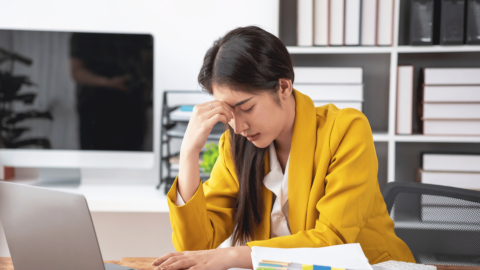Suboxone is supposed to reduce opioid cravings, so if you’re still experiencing them, it can feel frustrating—or even discouraging. You might be asking:
- Is my dose too low?
- Is Suboxone not working for me?
- Are cravings just a normal part of recovery?
The truth is cravings can still happen while on Suboxone, but they don’t mean the medication isn’t working. Understanding what’s causing your cravings is the first step to fixing them.
Let’s break down why cravings happen, what might be going wrong, and how to adjust your treatment to get back on track.
How Suboxone Helps Reduce Cravings
Suboxone contains buprenorphine, a partial opioid agonist, which means it binds to opioid receptors in your brain—but only partially activates them. This helps by:
- Preventing withdrawal symptoms
- Reducing cravings for stronger opioids like heroin or oxycodone
- Blocking other opioids from producing a high
However, Suboxone doesn’t eliminate cravings 100% for everyone. If you’re still experiencing cravings, it’s crucial to figure out why so you can adjust your treatment plan accordingly.
Common Reasons for Cravings While on Suboxone
1. Your Suboxone Dose Might Be Too Low
One of the most common reasons for cravings on Suboxone is that your dose isn’t high enough to fully suppress withdrawal and opioid-seeking thoughts.
Signs Your Dose May Be Too Low:
- You feel mild withdrawal symptoms before your next dose (chills, muscle aches, irritability).
- Cravings are stronger in the evening or before your next scheduled dose.
- You feel like Suboxone “wears off” too quickly.
What to Do:
- Talk to your doctor about adjusting your dose. Many people stabilize on 16–24 mg per day, but your needs may differ.
- Some patients do better with split dosing (taking half in the morning, half at night) to maintain steady levels.
Example: A person on 8 mg of Suboxone daily notices cravings returning by the evening. When their doctor increases their dose to 16 mg split into two doses (8 mg in the morning, 8 mg in the evening), cravings disappear.
2. You’re Experiencing Psychological Triggers
Not all cravings are physical—many are psychological and emotional.
Common Psychological Triggers:
- Stress – Work, family issues, financial problems
- Boredom – Missing the routine of drug use
- Social Triggers – Being around people or places linked to past drug use
- Emotional Distress – Anxiety, depression, loneliness
What to Do:
- Identify your personal triggers and plan ways to cope (exercise, therapy, journaling).
- Build a support system—attending counseling or group therapy can help rewire your thinking patterns.
3. You’re Taking Suboxone Incorrectly
Suboxone must be absorbed properly to work effectively. If taken incorrectly, your body may not absorb enough medication, leading to cravings.
Common Mistakes When Taking Suboxone:
- Swallowing saliva too soon—this reduces absorption.
- Not letting the strip fully dissolve under the tongue.
- Eating or drinking too soon before or after taking Suboxone.
What to Do:
- Place Suboxone under your tongue and let it dissolve completely (10–15 minutes).
- Avoid food or drinks 30 minutes before and after taking Suboxone.
Example: A person taking Suboxone drinks coffee right before their dose and notices cravings creeping in. When they stop drinking anything 30 minutes before dosing, their cravings subside.
4. Your Brain Is Still Adjusting to Recovery
Even with Suboxone, your brain is healing from opioid dependence—a process that takes time.
- Opioid addiction rewires the brain’s reward system, making it crave opioids for pleasure and stress relief.
- While Suboxone helps, old habits and thought patterns take time to break.
- Some cravings are just mental reflexes—your brain remembering past drug use and automatically seeking it.
What to Do:
- Give it time. Cravings fade as your brain rebalances.
- Stay consistent with treatment—medication, therapy, and support groups help reprogram your brain’s response to triggers.
Example: Someone recovering from oxycodone addiction finds that cravings decrease significantly after six months on Suboxone as their brain adjusts.
When to Talk to Your Doctor About Cravings
If your cravings are intense, frequent, or making you consider using again, it’s time to check in with your doctor.
They may recommend:
- Increasing your dose to better control cravings.
- Switching to split dosing (morning and evening) to maintain steady medication levels.
- Adding therapy or counseling to help with psychological triggers.
Key Takeaway: Cravings don’t mean failure—they just mean your treatment plan needs adjustment.
How QuickMD Can Help You Manage Cravings and Stay on Track
If you’re still struggling with cravings on Suboxone, QuickMD’s online doctors can help you adjust your treatment and stay in control of your recovery.
QuickMD’s online Suboxone treatment offers:
- Same-day prescriptions sent to your pharmacy
- Online doctor visits—no in-person clinic required
- Support for dose adjustments and relapse prevention
- Affordable, judgment-free care from addiction specialists
Final Thoughts
Suboxone greatly reduces opioid cravings, but it’s not a magic cure. If you’re still experiencing cravings:
- Your dose may need adjusting.
- Psychological triggers might be affecting you.
- Proper medication absorption is key.
- Your brain is still healing, and that takes time.
Cravings don’t mean failure—they mean your recovery plan needs fine-tuning. The good news? You can adjust and overcome them. Need professional support? Book a QuickMD appointment today.




